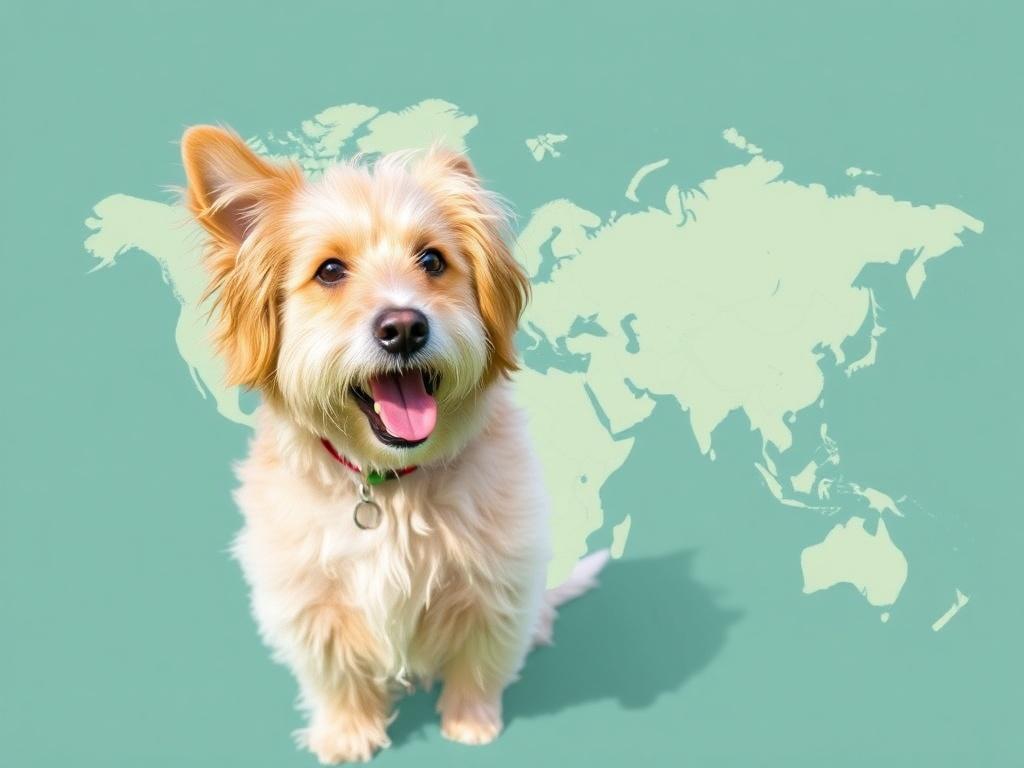
How to Travel with Pets Internationally: A Complete Guide for Stress-Free Adventures
Traveling internationally with your beloved pet can be both exciting and daunting. There’s the thrill of exploring new places, but also the responsibility of ensuring your furry friend is safe, comfortable, and compliant with various regulations. Whether you’re moving abroad, taking a long vacation, or visiting family overseas, knowing how to travel with pets internationally is crucial for a smooth journey. In this guide, we’ll walk you through every step—from planning to arrival—so you and your pet can embark on your adventure worry-free.
Understanding the Basics: What Does It Take to Travel with Pets Internationally?
Before booking flights or packing your bags, it’s important to grasp the fundamental requirements involved in international pet travel. Different countries have varying rules about vaccinations, quarantine, and documentation. Knowing these requirements ahead of time helps you avoid last-minute surprises.
One of the first things to do when planning how to travel with pets internationally is checking the destination country’s pet import policies. For instance, many countries require a valid rabies vaccination administered at least 21 days before travel. Others might demand a microchip and a pet passport or specific health certificates. Understanding these will help you create a checklist tailor-made for your trip.
Regular vet visits, health assessments, and specific vaccinations become part of your preparation routine. Your veterinarian is your best ally for advice on how to travel with pets internationally, especially regarding health certificates and vaccination documentation.
Step-By-Step Preparation for International Pet Travel
Step 1: Vet Checkups and Vaccinations
Before any international adventure, schedule a thorough vet checkup. Your pet must be in good health to travel, and you need current vaccinations on record. Some countries require additional shots such as the tick-borne encephalitis vaccine, depending on the region.
Your vet can also help with obtaining a health certificate, which certifies your pet is healthy and fit for travel. This certificate usually must be issued a few days before departure.
Step 2: Microchipping Your Pet
A pet microchip isn’t just about identification—it’s often a mandatory travel requirement. Many countries demand your pet has an ISO-standard microchip implanted before issuing travel documents. The microchip number must be accurate on all paperwork, including vaccination records.
If your pet isn’t microchipped yet, arrange for this in advance. It’s a quick, minimally invasive procedure that provides peace of mind during your journey.
Step 3: Research Airline Rules and Pet Travel Policies
Every airline has its own regulations and fees on traveling with pets. Some allow small pets in the cabin, while larger ones must travel as cargo or under strict conditions.
When planning how to travel with pets internationally, it’s wise to:
- Contact airlines directly about their pet policy.
- Verify crate dimensions and requirements.
- Ask about fees, pet check-in procedures, and layover policies.
- Confirm temperature restrictions during travel.
Booking your pet’s spot early is essential, as many airlines limit the number of pets per flight.
Step 4: Choosing the Right Travel Crate
Your pet’s crate is not just a container; it’s their safe space throughout the trip. Selecting the correct crate is a critical part of how to travel with pets internationally.
Here are the features to consider:
| Feature | Description |
|---|---|
| Size | Large enough for your pet to stand, turn around, and lie down comfortably. |
| Material | Sturdy and well-ventilated, usually plastic or metal. |
| Locking Mechanism | Secure to prevent accidental openings during transit. |
| Comfort | A soft mat or blanket for cushioning. |
Ensure the crate meets International Air Transport Association (IATA) standards, which airlines reference for pet travel crates.
Step 5: Preparing for the Journey
On travel day, you want your pet to be as comfortable and stress-free as possible. Some tips:
- Avoid feeding your pet 4-6 hours before travel to prevent nausea.
- Give access to water up to departure time.
- Take your pet for a walk before the trip.
- Familiarize your pet with the travel crate days in advance.
- Label the crate with your contact information and “Live Animal” stickers.
Managing Documentation: Your Pet’s Travel Passport
One of the most common questions on how to travel with pets internationally is about the paperwork involved. Typically, you’ll need:
- Pet Passport: Available in some countries, this document records vaccines, microchip info, and treatments.
- Health Certificate: Signed by a licensed vet within a timeframe specified by the destination.
- Rabies Vaccination Certificate: Proof of up-to-date rabies shots that comply with destination rules.
- Import Permits: Certain countries require permits issued by relevant authorities.
Keep these documents handy and make photocopies or digital backups. Some countries perform document checks upon arrival, and incomplete paperwork may result in quarantine or denied entry.
Traveling with Different Pets: Special Considerations
While dogs and cats are the most common traveling pets, some travelers take birds, rabbits, or exotic animals across borders. Each pet type has unique restrictions and preparations.
Dogs and Cats
These pets often have the most straightforward regulations but still require microchips, vaccinations, and health certificates. Some airlines have breed restrictions, such as prohibiting snub-nosed (brachycephalic) dogs due to respiratory concerns during flight.
Birds
Traveling with birds can be complex due to risks of avian diseases. Many countries require quarantine or prohibit certain species. It’s critical to research well in advance.
Exotic Pets
Exotic animals demand special permits and compliance with CITES (Convention on International Trade in Endangered Species) regulations. This may include reptiles, rodents, or amphibians.
Handling Layovers and Transfers During Your Trip
International flights often involve layovers or connecting flights, complicating pet travel logistics. Managing layovers is an important part of learning how to travel with pets internationally.
Consider the following:
- Check if layover country requires transit visas or special permits for pets.
- Find out airport pet relief areas during layovers.
- Choose flights with shorter layovers to reduce stress on your pet.
If the layover airport has a live animal handling area, you can sometimes retrieve and care for your pet between flights. Otherwise, the pet may stay in the cargo area, so be sure to ask your airline in advance.
Tips for Making the Flight More Comfortable for Your Pet
Long flights can be stressful, but a few thoughtful steps can improve your pet’s experience.
- Use calming pheromone sprays or collars, which can reduce anxiety.
- Consult your vet about mild sedatives if your pet is extremely anxious. However, many airlines discourage sedation for safety reasons.
- Dress your pet comfortably: Avoid constrictive harnesses or collars.
- Provide familiar toys or blankets inside the crate.
- Stay calm yourself—pets often pick up on stress.
Customs and Quarantine: What to Expect Upon Arrival
When entering a new country with your pet, customs inspections are common. Officials check documents, inspect your pet’s health, and enforce quarantine if necessary.
Some countries, such as Australia, New Zealand, and Japan, have strict quarantine policies that can last weeks. Others allow immediate entry if all paperwork is perfect.
To avoid quarantine:
- Follow pre-arrival guidelines meticulously.
- Provide accurate and complete documentation.
- Comply with vaccination and testing timelines.
Being well-prepared reduces the stress and cost of quarantine procedures.
Returning Home: Regulations and Preparations
Don’t forget about your journey back! Many countries require pets to undergo reverse health checks and vaccination updates before re-entry.
It’s a good idea to:
- Check your home country’s current regulations regularly.
- Schedule your vet visits for health certificates in advance of return flights.
- Keep all travel records from your trip handy in case you need to show proof at customs.
Summary Table: Key International Pet Travel Requirements by Region
| Region | Microchipping | Vaccinations | Quarantine | Required Documents |
|---|---|---|---|---|
| Europe (EU countries) | ISO Microchip mandatory | Rabies vaccination, valid pet passport | Usually none if rules followed | EU Pet Passport or veterinary certificate |
| Australia & New Zealand | Microchip required | Rabies & other vaccinations | Strict quarantine (up to 10+ days) | Import permit, veterinary certificates |
| United States & Canada | Recommendation for microchip | Rabies vaccination required | Generally no quarantine | Health certificate and vaccination records |
| Asia (e.g., Japan, China) | Microchip mandatory in some countries | Rabies & other vaccines | Varies; Japan requires quarantine | Import permits, health certificates |
Additional Tips: Making the Most of Traveling with Pets Internationally
Traveling internationally with your furry companion is full of possibilities, but also requires patience and planning. A few final tips to make your experience even better include:
- Practice crate training: Help your pet get used to their carrier weeks before travel.
- Research pet-friendly accommodations and transportation at your destination.
- Keep emergency vet contacts for your destination handy.
- Consider travel insurance that covers pets.
- Stay flexible and maintain a positive attitude—to keep your pet calm and comfortable.
How to travel with pets internationally might seem overwhelming at first, but with the right preparation and mindset, your pet can be a happy travel buddy while you explore the world together.
Conclusion
Traveling with pets internationally is a rewarding experience that opens doors to new adventures with your beloved companion. The key is thorough planning—understanding country-specific regulations, preparing your pet physically and mentally, and organizing all necessary documentation. From choosing the right crate and vet visits to understanding airline policies and managing layovers, every step contributes to a smooth journey. While it requires patience and care, the joy of having your pet by your side in a foreign land is well worth the effort. Armed with the knowledge and tips shared here, you can confidently set off on your next international trip knowing you’re fully prepared to travel with pets internationally. Safe travels to you and your faithful friend!




